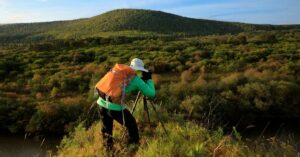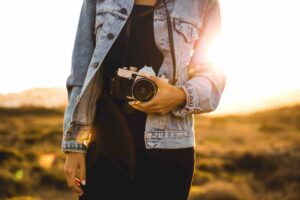- Wake Up Early, Stay Out Late
The early bird gets the worm. I’m sure you’ve heard that phrase. Waking up early means you’ll get fewer tourists and photographers. Just reach early, right when it opens, and you’ll pretty much have the place to yourself!
The so-called “golden hour” is one of the times of day that many photographers prefer. This is one hour before sunset and one hour after sunrise. The golden hour photography provides your subject with a warm glow (due to the Sun’s colour temperature being at its warmest) and is particularly flattering for portraits and landscapes.
Another excellent period is in the middle of the day or the afternoon when the shadows are longer, and the photographs have a lot more depth.
2. Pre-Trip Location Research
Try reading travel books about the destination. Search on the internet for travel articles and travel blog posts to help you with ideas for photos. Talk to people who have already been there. If you’re taking a trip to Turkey, I would suggest getting a tour guide at madeinturkeytours.com.
Some of the best tools for travel photography research are Instagram, Pinterest, and Google Image Search. You can use them to know where perfect locations are for your photography.
When documenting a location, if you’re serious about travel photography, a good rule of thumb is to consider all aspects of the site. You’re a photojournalist, a portrait photographer, a food photographer, a wildlife photographer, and a landscape photographer, to name a few professions.
When I travel, I still tend to focus on landscapes. Therefore I frequently break this guideline. It isn’t easy to keep reminding oneself to picture things you don’t particularly care about, but it’s necessary. To honestly portray what it’s like to be there, you need to describe the tale of the area.
If you are travelling with your family or group of friends, a private charter at Jettly is not only the most convenient but also the most cost-effective solution.
3. Rule Of Thirds In Photography
One of the most basic photography tips is to understand the Rule of Thirds, which will help you create more balanced compositions. Try breaking an image into three horizontals and verticals, so it’ll split into different sections.
The main goal should be to place essential parts of the photo into those three sections and help set the overall image to be eye-pleasing.
Most digital cameras with screens and certain smartphones have the option of displaying the thirds on the screen, making things even more straightforward! The most vital focal points of the image are the four spots where these lines cross, and the second most critical points are the lines themselves.
This is where you want your photo’s main subject to be. This works for both foreground and background elements, such as horizon lines in landscapes.
4. Depth
In portraits or close-up photographs of small, intricate and detailed objects like flowers or insects (or mushrooms in this case! ), depth of field can give flair (and umm… depth!) to a shot. If you have an SLR camera, changing the aperture to obtain different depths of field is simple. However, even a cell phone can be used to capture aesthetic photographs.
You can change the centre of your shot by getting closer to your subject and shooting from a lower angle. The result will be that more of your background will be visible, and it will be out of focus, allowing your subject to stand out – POP!
5. Patience Is the Key
Photography is all about seeing what is in front of you and not just with your eyes, but with your heart & mind as well. It requires dedicated time and full attention. Slow down and make a conscious effort to become more aware of the surroundings before pressing the shutter.
Practice makes perfect is one of my finest vacation photography recommendations. YouTube tutorials, high-quality equipment, and breathtaking scenery will all help you improve your game.
However, if you don’t act the part and shoot many images, you won’t get very far in the field of photography.
Pay attention to small details. You must try sitting at a photogenic corner and wait for a subject to pass. But, if you don’t have the patience to give, you might miss a fantastic photo!













